12 Most Common Types of Daisies—and How to Know Which Ones Are Best for Your Garden
These whimsical flowers will brighten up your landscape.
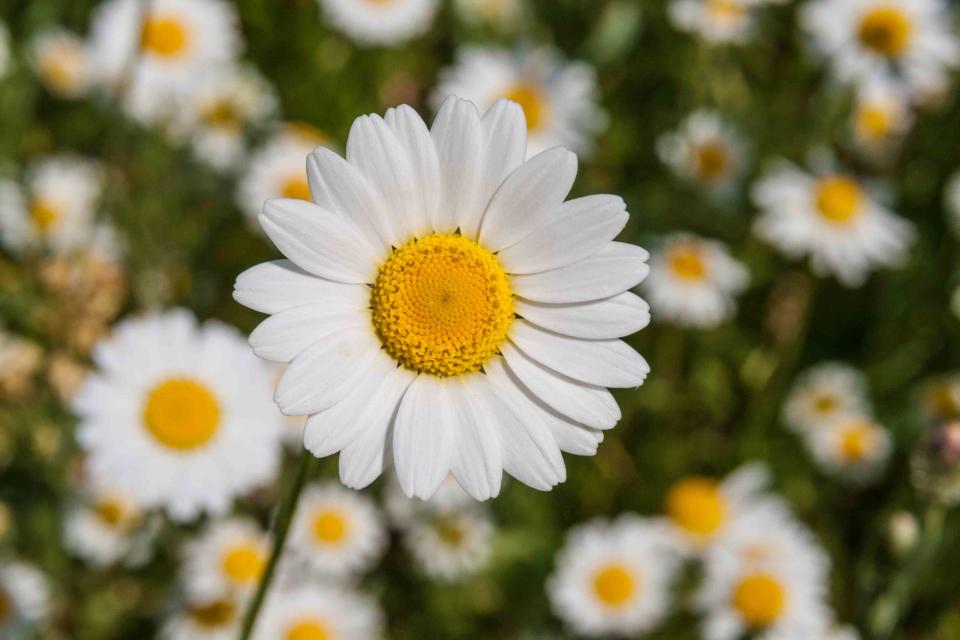
Steffen Gathling / lens-flare.de / Getty Images
When you think of daisies, small white flowers with a yellow center likely come to mind. But there are thousands of varieties of daisies available in many vibrant colors, from pinks and purples to blues and reds. The common name daisy is given to the flowering plants in the Asteraceae family, which is a collection of plants identified by their central disk of tiny florets that are surrounded by a ring of leaf-like petals. These beautiful plants are known for being low maintenance and tolerant of a range of growing conditions. To help you find the perfect daisy for your garden, we're sharing some of the most common types of daisies, as well as the zones and conditions they grow best in.
Meet the Expert
Adrienne Roethling, garden director for Paul J. Ciener Botanical Garden
Parker Garlitz, managing partner at True Leaf Market
Related: How to Grow and Care for Daisies
Shasta Daisy

TonyBaggett / Getty Images
Shasta daisy (Leucanthemum x superbum) is the form of daisy that most gardeners are familiar with. "They have those typical pure white petals with bright yellow centers," says Adrienne Roethling, garden director for Paul J. Ciener Botanical Garden. "Flowers cover the plant beginning in August and will often last until frost."
Zones: 4 to 9
Size: 2 to 3 feet tall x 1 to 2 feet wide
Growing conditions: Full sun; well-draining soil
Gerbera Daisy
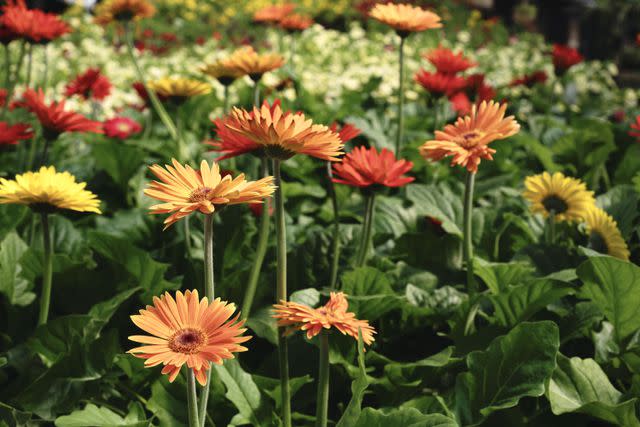
Melissa Ross / Getty Images
Available in beautiful reds, whites, oranges, pinks, and yellows, gerbera daisies (Gerbera jamesonii) produce big flowers borne from large, crinkly leaves. In most climates, this type of daisy blooms in spring and fall. "The foliage may be prone to powdery mildew," says Roethling. "Space plants apart to allow better airflow and remove infested leaves."
Zones: 8 to 10
Size: 6 to 18 inches tall x 8 to 16 inches wide
Growing conditions: Full sun; well-draining soil
Nippon Daisy
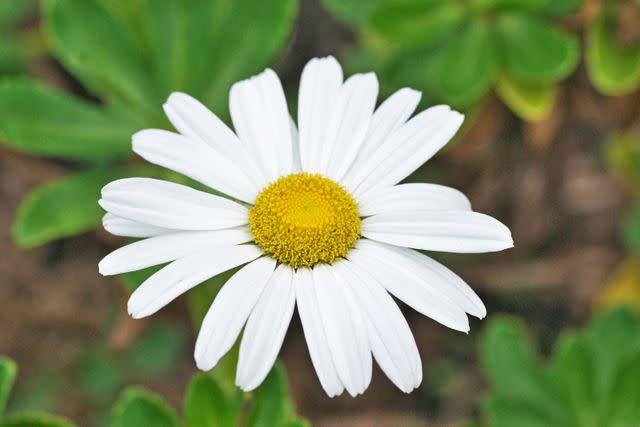
igaguri_1 / Getty Images
Similar to shasta daisy, Nippon daisy (Nipponanthemum nipponicum) has large pure white flowers with a bright yellow center. "Nippon daisy forms a bush in warmer climates while the stems remain woody most winters," says Roethling. "Once spring hits, new leaves will emerge on stems that survived the winter or at the ground level." Nippon daisies are typically late to perform, flowering in October or November.
Zones: 5 to 9
Size: 1 to 3 feet tall x 1 to 3 feet wide
Growing conditions: Full sun; well-draining soil
Dahlberg Daisy
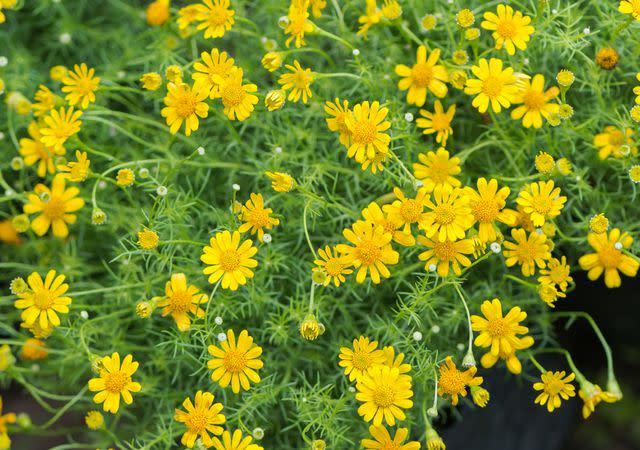
kwanchaichaiudom / Getty Images
Dalberg daisy (Thymophylla tenuiloba) is a low-growing ground cover with green, lacy foliage and bright yellow blooms. "This type of daisy is native to hot and arid regions such as Texas and Northern Mexico," says Parker Garlitz, managing partner at True Leaf Market. "It thrives in climates prone to drought and in poor soils. Some shade during the summer months may be beneficial."
Zones: 5 to 10
Size: 8 inches tall x 10 to 12 inches wide
Growing conditions: Full sun; well-draining soil
Gloriosa Daisy
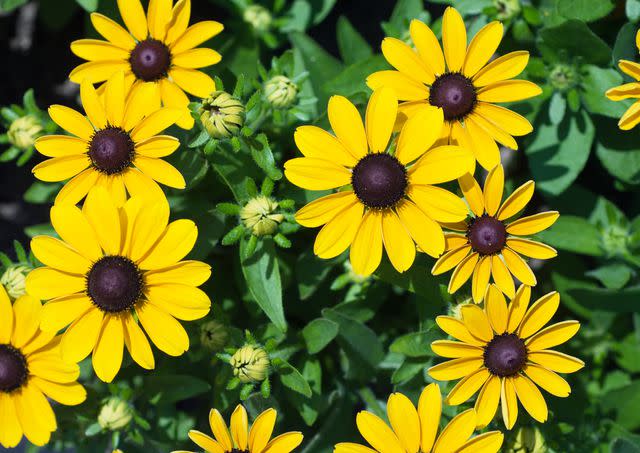
ZenShui/Michele Constantini / Getty Images
Also known as black-eyed Susans, gloriosa daisies (Rudbeckia hirta) have golden yellow petals around a dark brown center. "Black-eyed Susans are well-known for their drought tolerance and ability to thrive in regions prone to hot, dry summers," says Garlitz. "They are a perennial favorite of pollinators and are native to the eastern and midwest United States."
Zones: 3 to 9
Size: 1 to 3 feet tall x 1 to 2 feet wide
Growing conditions: Full sun; moist, well-draining soil
English Daisy
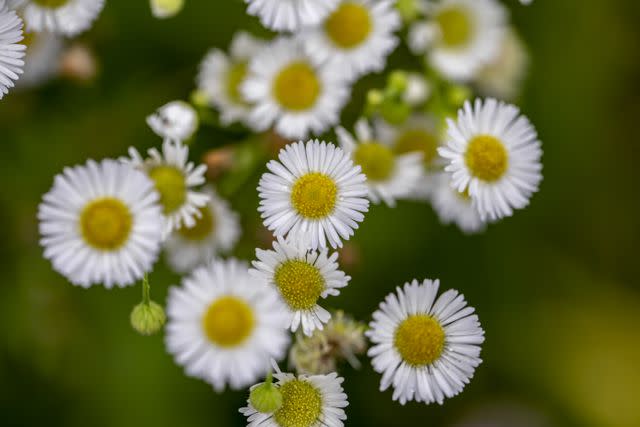
Santi Wiwatchaikul / Getty Images
Ideal in smaller gardens, English daisy (Bellis perennis) has a rosette of leaves that emerge in spring and produce pink or white flowers. "These little flowers make a big impact, the petals are really narrow, encompassing a yellow center," says Roethling. "But the flowers are as soft and thick as a make-up brush." For best results, add compost to amend the soil when growing English daisies.
Zones: 4 to 9
Size: 6 inches tall x 8 to 10 inches wide
Growing conditions: Full sun to part shade; well-draining soil
Painted Daisy
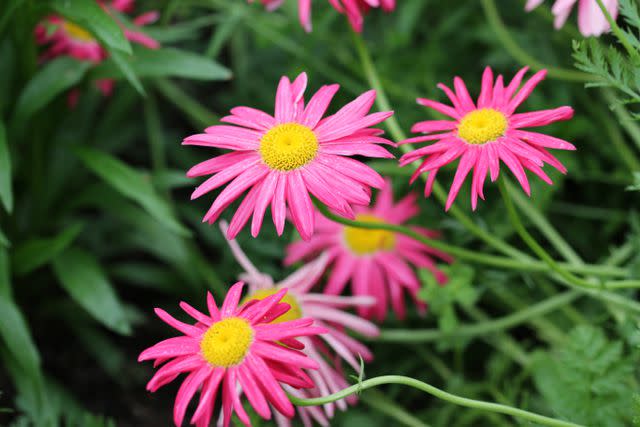
JohnatAPW / Getty Images
Painted daisies (Tanacetum coccineum) form pink, white, or magenta flowers with yellow centers that arise from thick stalks in summer. This flower attracts a variety of pollinators for several weeks and should be cut back after flowering to promote vigor, says Roethling.
Zones: 3 to 7
Size: 1 to 3 feet tall x 1 to 2 feet wide
Growing conditions: Full sun to part shade; loamy, rich soil that is well-draining
Michaelmas Daisy
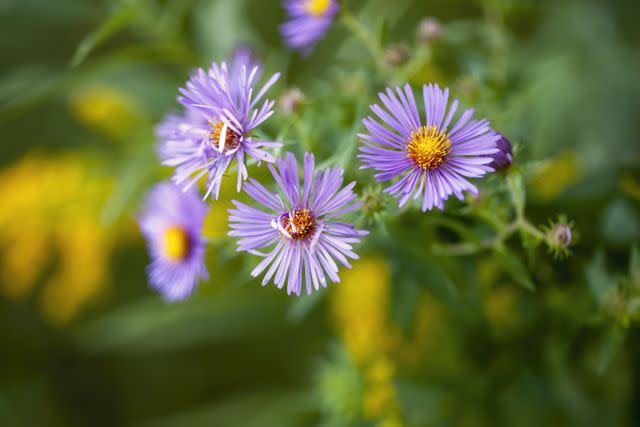
Ali Majdfar / Getty Images
Commonly known as aster, Michaelmas daisy (Symphyotrichum spp.) is native throughout North America, meaning it's tolerant of very dry and sunny conditions. When this plant it happy, it spreads by seed, so it's perfect for a meadow-like atmosphere if you have room in your garden, says Roethling.
Zones: 4 to 9
Size: 1 to 2 feet tall x 1 to 2 feet wide
Growing conditions: Full sun; well-draining soil
Prairie Fleabane
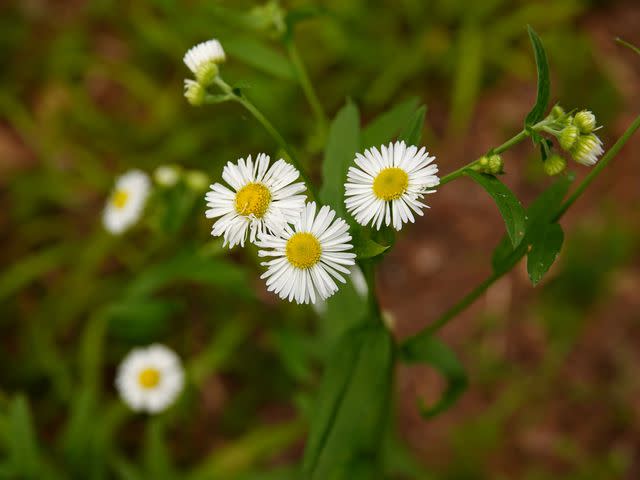
Wirestock / Getty Images
Prairie fleabane (Erigeron strigosus) is a native plant that grows in about every state. The leaves of this annual emerge in spring, followed by little, white daisy-like flowers. "The white petals are narrow, short, and form from a large yellow center," says Roethling. "Flowers will last for several months in summer." Although it's an annual, it typically comes back the following year by seed.
Zones: 2 to 10
Size: 1 to 2 feet tall x 1 to 2 feet wide
Growing conditions: Full sun; well-draining soil
Chocolate Daisy
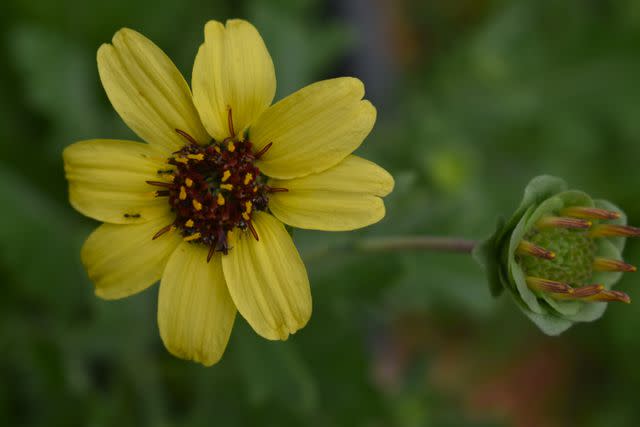
Sandra Sapp / Getty Images
Another native flower, chocolate daisy (Berlandiera lyrata) has a lovely fragrance that will make any garden smell heavenly. The light and airy stalks give rise to yellow flowers that have green to red centers. This plant can bloom all summer long with access to sun and soil with good drainage, says Roethling.
Zones: 4 to 10
Size: 1 to 2 feet tall x 1 to 2 feet wide
Growing conditions: Full sun; clay soil that is well-draining
Related: The 11 Most Fragrant Flowers to Plant in Your Garden
Marguerite Daisy

Steffen Gathling / lens-flare.de / Getty Images
Marguerite daisy (Argyranthemum frutescens) is an annual plant that prefers cooler weather. It is popular in white but also comes in shades from pink to yellow; the flowers appear in summer and will last for the entire season. "The best place to grow marguerite daisy is in containers in full to part sun," says Roethling. "Fill the containers with a combination of potting soils and compost to keep the roots moist and cool."
Zones: 8 to 11
Size: 2 feet tall x 2 feet wide
Growing conditions: Full sun to part shade; well-draining soil
Related: The 10 Best Plants to Grow in Your Container Garden
Coneflower Daisy
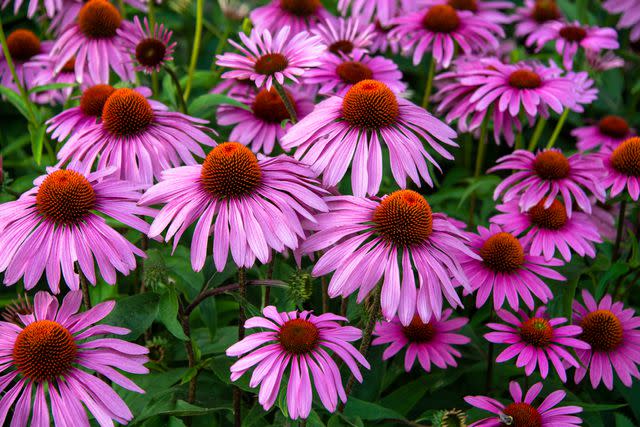
Nancybelle Gonzaga Villarroya / Getty Images
A drought-tolerant native plant that attracts pollinators to your yard, coneflower daisy (Echinacea) produces beautiful purple blooms with burnt-orange centers. This hardy flower, which blooms in summer, can withstand a variety of growing conditions, like drought, heat, high humidity, and a variety of soils.
Zones: 3 to 9
Size: 3 to 4 feet tall x 1 to 2 feet wide
Growing conditions: Full sun to part shade; moist, well-drained soil
Read the original article on Martha Stewart.

